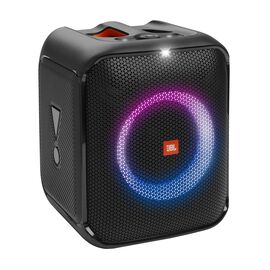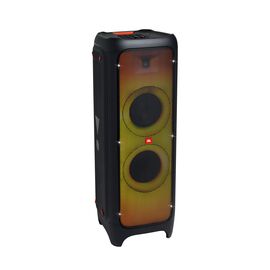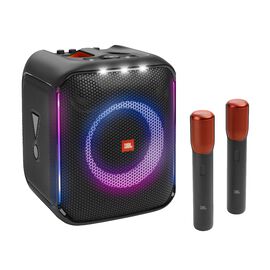Loudspeakers
JBL are renowned around the globe for designing and building exceptional speakers for music lovers, home theater designers, musicians, record producers and professional recording engineers. Want a loudspeaker system that rocks? As the company responsible for concert sound at Woodstock (twice) and reference-standard audio monitors in countless recording studios, no other brand can build a loudspeaker quite like JBL.
What exactly is a loudspeaker?
The term "loudspeaker" or "speaker" basically refers to a device which converts an electrical signal into sound. It's the final link in the sound reproduction chain and tends to be the most limiting...which is why sound professionals and audiophiles alike place a great deal of importance on them.
Speaker design and construction
There are many different designs and construction methods used including reflex (or ported), sealed (or closed), electrostatic, transmission line and horn. Each has their advantages and disadvantages and is chosen by different listeners depending on their overall sound characteristics. Which is best? It depends who you ask but at the end of the day it's the fidelity of the sound that reaches your ears and how you perceive that sound that matters.
What's behind the grill?
In a typical speaker cabinet, or enclosure, you will find "drivers" (sometimes called transducers). These may be tasked with reproducing the full audio spectrum or may be dedicated to specific parts of it. The components usually include a "woofer" (for low frequencies), a mid range driver and a "tweeter" for high frequencies. Sometimes multiple drivers are added to improve power handling or further divide the allocation of frequencies. Usually contained in a separate enclosure a "subwoofer" has the job of reproducing very low frequencies.
Understanding specifications
Let’s cut through the jargon and look at a few specifications you need to pay attention to...
Frequency Response: This refers to the range of frequencies a speaker is able to reproduce within a certain variance limit. For example the JBL Stage A120 has a frequency response of 60Hz – 40kHz.
Rated power (also known as nominal or continuous power): This is the amount of power a speaker is designed to handle before damage could occur. This specification can be sometimes be expressed as "recommended amplifier power". For the Stage A120 this is 20 – 125W (Watts).
Impedance: In simple terms this means the resistance a speaker gives to the signal it receives from an amplifier. Impedance is typically rated at 4 to 8 ohms. You should check your speaker’s impedance rating to ensure it matches the rating for the amp that will be driving it. The Stage A120 has a nominal impedance of 6 ohms so is recommended for use with an amplifier that specifies a matching speaker impedance range.
Sensitivity: This measurement refers to the volume (or sound pressure level) produced with 1 watt of input. Also known as "efficiency" it relates to how loud the speaker will sound when compared to other speakers driven by the same signal, from the same amplifier.
What is a crossover?
In speaker design a crossover refers to an electronic circuit which splits an audio signal into specific bands of frequencies. Its objective is to ensure that drivers designed to handle a certain frequency range only receive those frequencies. For example the crossover will make sure the woofer isn't trying to reproduce high frequencies. The end result is better loudspeaker performance.
Why choose JBL?
Nobody knows a loudspeaker system like JBL. Founded by James Bullough Lansing way back in 1946, JBL's reputation for audio excellence is second to none. Discover the full range of floor standing, bookshelf, home theater and wireless models at an authorized dealer today.























